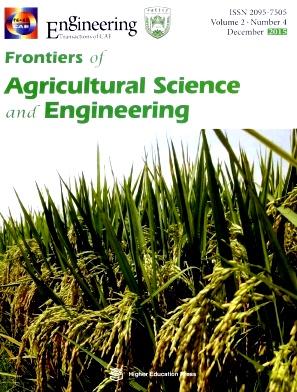中国草原农业研究综述
IF 2.8
4区 农林科学
Q1 AGRONOMY
引用次数: 9
摘要
作物和牲畜之间的相互作用一直是许多农业系统进化的核心。在本文中,我们确定了混合作物-牲畜系统的发展和特征,重点是基于草原的系统,因为这些系统在中国覆盖了大片地区,并面临着一些挑战。大约8000年前,从最初的狩猎和觅食系统过渡到久坐的生活方式,并结合作物和牲畜的生产系统,根据降雨量、太阳辐射和温度、文化和市场,形成了一系列不同的混合系统。我们描述了5种主要类型的综合系统:(1)牲畜和牧场,(2)牲畜和粮食生产,(3)牲畜和作物-草地轮作,(4)牲畜、作物和森林(silvo牧场),以及(5)牲畜、农作物和鱼塘。接下来,对其中两个混合系统进行了更详细的描述,即干旱和半干旱地区的山地绿洲系统及其改造,以及黄土高原的作物-畜牧业综合生产系统。总的来说,综合系统中的作物-牲畜相互作用对作物生产、牲畜生产、能源使用效率和经济盈利能力有着显著的积极影响。我们得出的结论是,加强作物-畜牧业生产系统的整合是实现中国畜牧业更可持续发展的最重要途径之一。©作者2021。高等教育出版社出版。这是CC BY许可证下的开放访问文章(http://creativecommons.org/licenses/by/4.0)本文章由计算机程序翻译,如有差异,请以英文原文为准。
GRASSLAND AGRICULTURE IN CHINA—A REVIEW
Interactions between crops and livestock have been at the core of the evolution of many agricultural systems. In this paper, we identify the development and characteristics of mixed crop-livestock systems, with a focus on grassland-based systems, as these cover large areas in China, and face several challenges. Following the transition from the original hunting and foraging systems to a sedentary lifestyle with integrated crop-livestock production systems some 8000 years ago, a range of different mixed systems have developed, depending on rainfall, solar radiation and temperature, culture and markets. We describe 5 main types of integrated systems: (1) livestock and rangeland, (2) livestock and grain production, (3) livestock and crop – grassland rotations, (4) livestock, crops and forest (silvo-pasture), and (5) livestock, crops and fish ponds. Next, two of these mixed systems are described in greater detail, i.e., the mountain-oasisdesert system and its modifications in arid and semi-arid regions, and the integrated crop-livestock production systems on the Loess Plateau. In general, crop-livestock interactions in integrated systems have significant positive effects on crop production, livestock production, energy use efficiency and economic profitability. We conclude that improved integration of crop-livestock production systems is one of the most important ways for achieving a more sustainable development of animal agriculture in China. © The Author(s) 2021. Published by Higher Education Press. This is an open access article under the CC BY license (http://creativecommons.org/licenses/by/4.0)
求助全文
通过发布文献求助,成功后即可免费获取论文全文。
去求助
来源期刊
CiteScore
5.10
自引率
2.70%
发文量
33
期刊介绍:
Frontiers of Agricultural Science and Engineering (FASE) is an international journal for research on agricultural science and engineering. The journal’s aim is to report advanced and innovative scientific proceedings in agricultural field including Crop Science, Agricultural Biotechnology, Horticulture, Plant Protection, Agricultural Engineering, Forestry Engineering, Agricultural Resources, Animal Husbandry and Veterinary Medicine, Applied Ecology, Forestry and Fisheries. FASE is committed to provide a high level scientific and professional forum for researchers worldwide to publish their original findings and to utilize these novel findings to benefit the society.

 求助内容:
求助内容: 应助结果提醒方式:
应助结果提醒方式:


